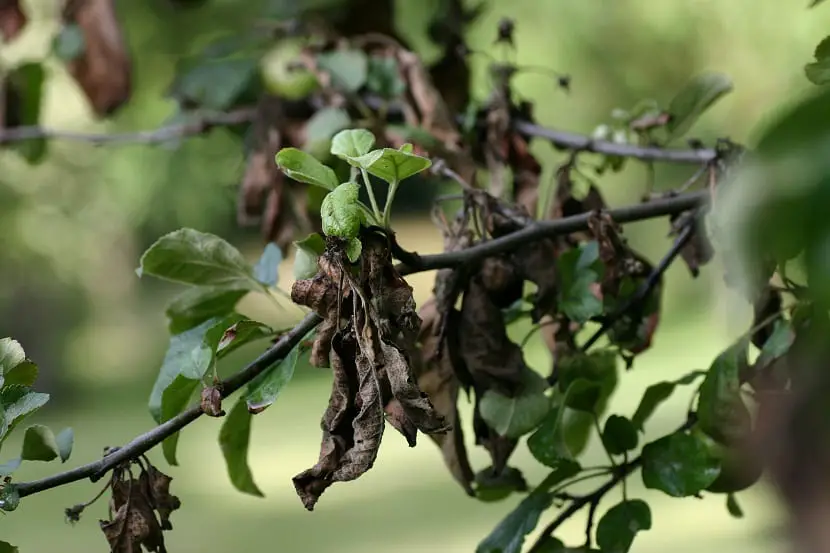

The Erwinia amylovora is a bacterium that causes one of the most serious infectious diseases and dangerous that affects all types of plants, shrubs and trees, especially plants belonging to the Rosaceae family. At present there are at least 150 species distributed in 37 genera that are affected by this plague, although it must also be said that this bacterium does not affect humans or animals.
Features


The danger of spreading fire blight is usually determined by factors such as insects, birds, wind and water that easily spread the bacteria and, on the other hand, humans through the use of tools, clothing, hands, etc. Under favorable conditions, an exponential growth of the bacteria can occurfor example the high humidity that can cause the death of the seedlings in a short time.
The blooming season is the most critical point for plants to become infected and disease spread. On the other hand, bees that play a leading role in the pollination process, unfortunately they contribute by transporting the bacteria to the flowersto which it penetrates easily through nectar.
Likewise, this pest penetrates the tissues of the host plants, so that lenticels, stomata, flower nectars or wounds are the possible sites of entry of the infection.
Symptom
Symptoms can appear on stems, leaves, flowers, fruits and branches of the plant, throughout the vegetative cycle. In the flowering period, infected flowers turn dark and dry. Usually all flowering is affected, but individual flower death can occur. Diseased leaves turn brown, wilt, dry and acquire the characteristic reddish-brown color, as if burned. Hence the name of the disease, fire blight or fire blight..
The fruits can be attacked at any stage of their formation and growth, they tend to dehydrate and darken, until they finally rot. In species that have been regrafted and once the infection of the shoots has occurred, the infection becomes systematic and kills the plant.
The infected and dry parts tend to remain attached to the plant for a long time; while the withered shoots are bent in the form of a hook. In the trunk and branches, the infection produces lesions with a rather irregular contour. dark in tone. Plant death occurs when the bacteria reach all the woody tissues of the stem and branches.
In infected tissues in rainy or humid conditions, a whitish exudate, sometimes with a filamentous appearance, can be observed, formed by bacterial cells that can spread as mentioned at the beginning. It can be stated that the disease develops frequently from the upper branches and it spreads to the youngest in favorable conditions for its propagation, particularly during the period from May to September.
Prevention and control


The Erwinia amylovora it has wiped out vast areas under cultivation of pears and apples in many parts of the world. The control and fight against fire blight is basically preventivethat is why some recommendations are important:
- Use of material in hygienic conditions, made in areas free of bacteria.
- Be attentive to the state of the plants, especially to observe if there are symptoms of fire blight;
- Eliminate diseased branches, leaves and fruit. It is recommended to make the cuts 70 cm below the infected area and remove the diseased infected plants at the level of the trunk.
- Disinfect the tools used in removing the areas infected by the bacteria. It is recommended to use for the disinfection of tools, the 1% sodium hypochlorite or 7% alcoholic.
- In case of suspicion of the presence of the bacteria, report to the phytosanitary authorities.
- Other recommendations are do not overdo the use of nitrogen fertilizersavoid excessive watering and green pruning, be vigilant and eliminate unnecessary secondary flora.
Pre-flowering treatments are useful for reduce bacterial risk and prevent infection; while the treatments during vegetative activity have little preventive efficacy and even less, if the infection has already occurred.

